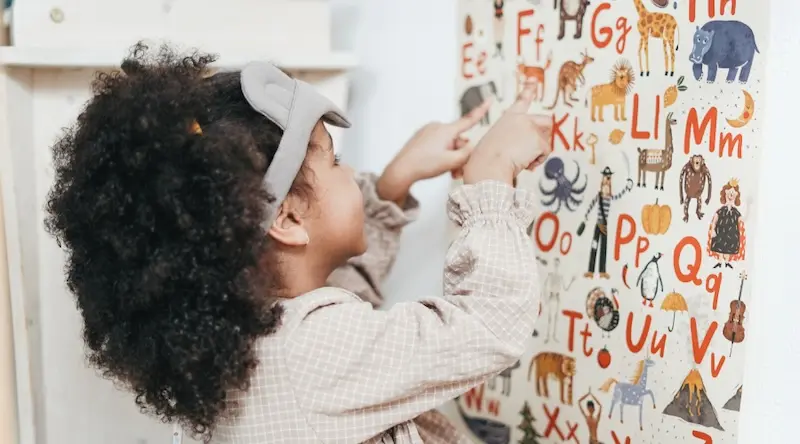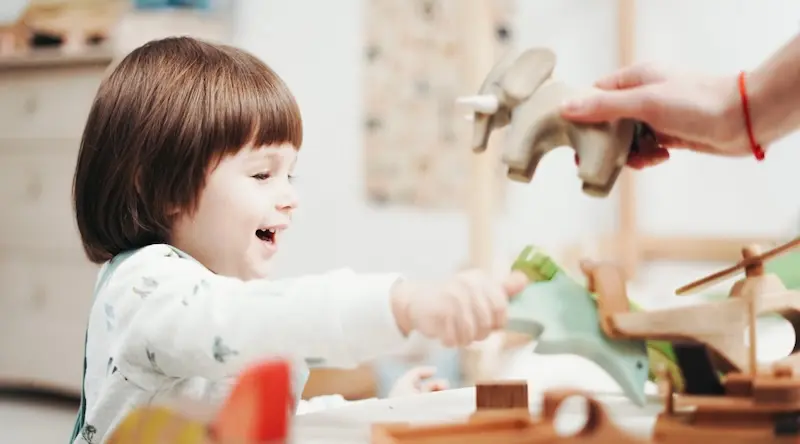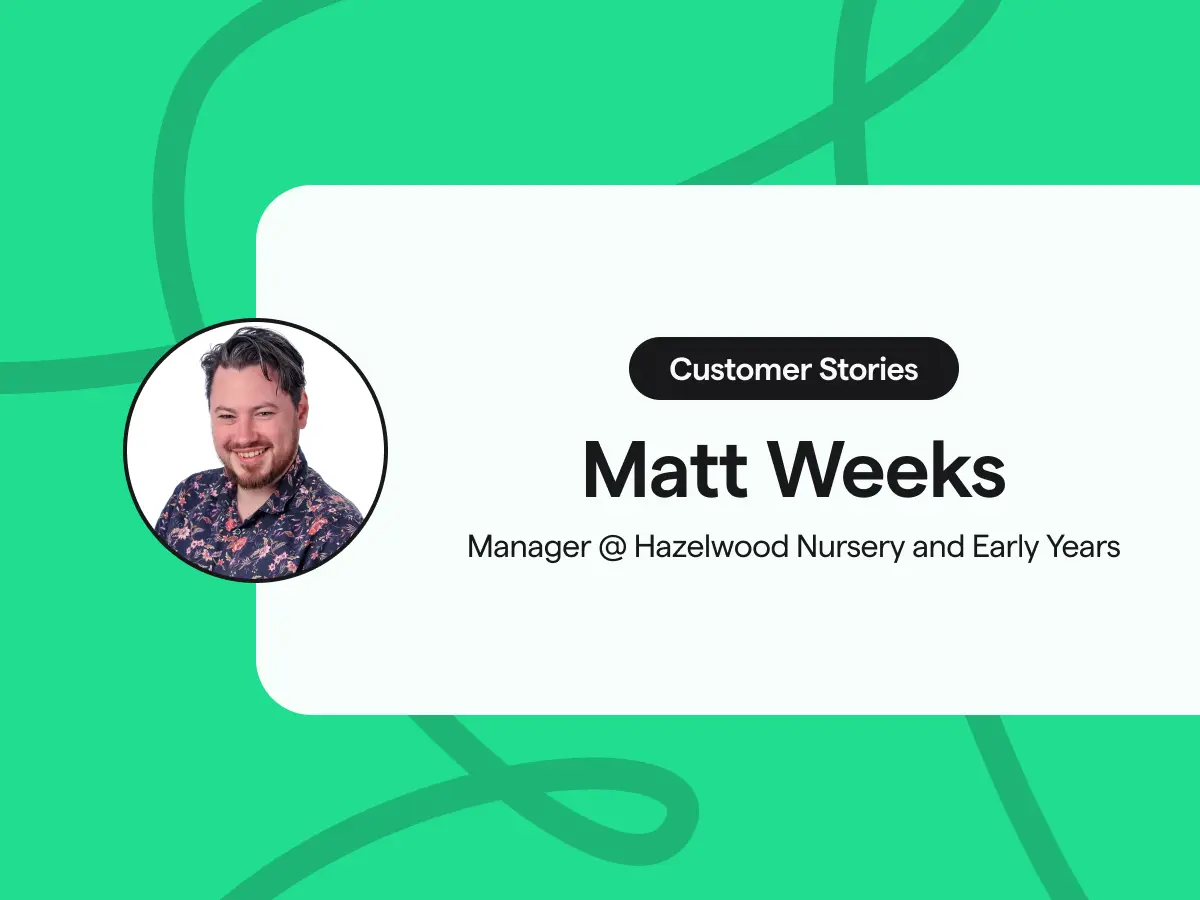settings
children
With Famly since
Working with qualified SENCO Bryony Guest, I was very impressed with her enthusiasm for getting going with additional support for the children identified as needing a ‘language boost’. We were clear why children needed the language support, and had already identified the ten children, so this meant we could move on to the creative stage of planning and resourcing activities.
The Early Years Foundation Stage recommends that children learn through play which has a purpose and is planned, with opportunities for child-led play and adult-led play. The language support sessions aimed to enhance the children’s experiences, through short adult-led sessions. They would focus on language and communication through listening and attention, understanding and speaking skills.
Bryony led the sessions and always started with a made-up song (set to the tune of Frere Jacques) which was designed to gain the children’s attention. The song helped to reinforce that group time was starting and encouraged the children to anticipate that something interesting and engaging would be happening. I helped Bryony think about the words so that they invited children to join in the group.
“It is group time, it is group time,
Come and see, come and see,
In my box of treasure, In my box of treasure,
What’s for me? What’s for me?”
Sessions focused on attention skills
For the listening and attention focused sessions, we decided that both visual attention and auditory attention activities would be important. This involved activities where children were encouraged to pay attention to either an object or a sound, and then both together to enhance learning through the senses.
Bryony used a flashing ball to roll to each child in turn at the start of each session. This activity helped children to learn each other’s names and to bring a sense of cohesion and belonging to the group. The lights on the flashing ball also drew their visual attention and enabled them to focus. We also used shiny stickers on a lollipop stick or a light-up wand to practice tracking horizontal, vertical, and diagonal movement.
Bryony asked the children to follow the item with their eyes as it moved slowly in different directions. This helped them to develop skills where their line of sight takes them across the brain’s ‘midline’ from left to right and back again. Crossing the midline is an important skill, because it helps children scan the pages in picture books and to read text as they get older. In the group, the children used their sight to focus attention on an object which then moved.

Sessions focused on listening skills
I was keen to make sure that the children had enough resources to use, so they didn’t have to wait long for a turn. You can keep expectations of turn-taking manageable and realistic when children have enough resources. It also helps to include all children if they each have a resource. Bryony gave each child an egg shaker for the listening game, which strengthened auditory skills. They were asked to shake their eggs when they heard a particular phrase in a book. She used the picture book ‘Oh Dear’ by Rod Campbell. The children listened to the story first. Then when it was read again, they shook their eggs when they heard the words “Oh dear, no eggs in here!”
The game involved anticipation and repetition, which helped the children become familiar with what to expect. Bryony had a turn to read a page then the children had a turn to shake their eggs and say ‘Oh dear, no eggs in here!” By modelling turn taking through this structured process, most children quickly adapted to waiting for a turn. You can gradually extend the time children wait in between turns, whilst they still remain engaged with the activity.
Exploring partner work and cause and effect
We encouraged the children to engage with each other in partner work too. They sung ‘Row, Row, Row your Boat’ whilst facing each other and making a boat shape with their arms. This supported them to look at each other, to attend to each other, to listen to each other and to sing along at the same time. Some of the children were very shy at the start, and a little reluctant to join in. But when we encouraged them to choose their own partner this seemed to boost their confidence and they gave it a go.
We also introduced activities that helped children understand cause and effect. They followed an “If I do this, then you do that” format, such as, if I show you the red ‘stop’ sign you stay very still. If I show you the green ‘go’ sign you can dance.” We reinforced the instructions by simplifying them “red stop, green dance”. Once the children understood the game, they were able to be the ones giving the instructions. The others had to pay both visual and auditory attention to participate, meaning they had to look and listen at the same time. The children seemed particularly keen on activities which explored cause and effect. You can use this type of activity to give children a structure to a game and help them to respond to a specific stimulus.

Multi-sensory learning
Children use their senses to explore the world around them. In order for them to be able to make sense of the world’s sounds, smells and objects, it’s helpful to plan activities that isolate the different senses. This helps children focus their attention and use their individual senses to process information.
When different senses are then used simultaneously, this is known as multi-sensory learning. It’s an important way of enhancing the opportunity for the messages to get to the brain through the different sensory channels. You can use multi-sensory activities, like those that involve looking and listening and moving at the same time, to support inclusion of all children.
Home life and developmental skills
The staff had shared with Bryony that they were seeing more and more children starting the setting who appeared to be delayed in language and communication skills, including their understanding of language and spoken vocabulary. Comeytrowe Under Fives Preschool is set in a middle-class area, and many parents are employed at the local hospital.
All parents play an important role in their child’s early language development as they contribute to the amount of verbal stimulation a child receives. Parents influence the language rich experiences children have, such as trips to the library, park, or shops and the quality of their play environment and toys. Some children inevitably grow up with less opportunity to experience first-hand a wide vocabulary in a wide range of contexts. Studies show that coming from a less-socio economic home (a poorer household) could be a risk factor for poor language environments. Some of the children in the setting also came from poorer households.
Checking out if a child can hear well
When you’re thinking about a child’s developmental progress, it’s important to try to understand the language experiences the child has at home. If a child appears not to be understanding language very well, they might not be familiar with the vocabulary, or it may be that they can’t hear very well. ‘Glue ear’ is an example of a common childhood condition that prevents children from hearing well.
I suggested that Bryony consider if each child was having difficulties because they weren’t understanding, not paying attention, or not hearing well. This was especially relevant in her setting preschool, because the big community hall has poor acoustics. Bryony discussed this with the parents prior to starting the programme, and all children were referred for a hearing assessment where the parents and staff had a concern.

Continuing the activities
After four weeks of activities focused on listening and attention, Bryony shifted the activities to develop understanding skills. She continued with some familiar warm up activities and new resources were introduced to support children’s understanding. Some sessions focused on the name and characteristics of objects, such as wild animals. Other sessions looked at understanding early mathematical concepts such as describing the size of objects. Other sessions developed understanding around the use of objects, using ‘association’ objects that are commonly used together, like a bucket and spade or knife and fork.
Each session, the children played a game known as Kim’s Game. The game required children to identify a number of real objects and remember them when they were concealed, which develops memory recall skills. The children were very excited to then check under the cloth hiding the objects if they had remembered them all.
Sessions focused on speaking skills
Language provides the foundation of thinking and learning, and speaking is a key part of being able to communicate our thinking to others.
It was important that throughout the group sessions, Bryony clearly modelled language to help the children not only learn key vocabulary, but to extend their vocabulary and enable them to talk about and participate in activities. We noticed that the children who were particularly shy at talking in front of other children gradually became more confident and started to whisper in the group, rather than stay silent. Bryony sat alongside these children and avoided asking them direct questions, to reduce pressure, but invited them to join in collectively, for example, by pointing at and saying the name of an object in a ‘point and say’ game.
One child who was learning English as a second language only moved their mouth with no sound at the start of the programme. With support from Bryony and working in a pair with another child, who was also learning English, they were able to join in with all the activities, particularly enjoying the Kim’s Game. This enjoyment meant that the child started to speak in response to the game, helping to name the animals.
Another quiet child used ‘pointing’ to make their thinking known, rather than speech, and whilst they were confident to follow directions and understood the activities well, it took several weeks before they began to vocalise in the group. This shows that through repetition, familiarity, and time for small group sessions children’s confidence to talk can be enhanced.
Helping everyone take part
It’s common for children learning a new language to just observe at first, and not to speak. Learning a new language involves gaining confidence in saying the right word at the right time. Having the trust of the group over the weeks seemed to benefit these children especially, and Bryony noticed that some stronger friendships formed as a direct result of participation in the small group. These friendships continued throughout the day and strengthened over the weeks.
To encourage the children to speak, we used different puppets to act out some scenarios. The children could tell the puppet what it needed to do, or they could be the voice of a puppet. This helped to take the attention away from the speaker and shift it to the puppet which worked really well to ensure participation. The puppets took on different characteristics such as being a bit mischievous, much to the enjoyment of the children!
The sessions were engaging, interactive, short and focused. We planned them to enhance children’s development through building their confidence to interact with others. In the third and final part of this series, we’ll take a moment to reflect on the success of our programme, and talk about what it did to enhance children’s listening, attention, understanding and speaking skills.
The big ideas
Top tips from Alphabet House
Get top tips from a setting just like yours. Hear from Alphabet House on why and how they use Famly - and why they’ve never looked back.
Read their story










